The wind can push you back, hold you in place, or escort you along. This is a piece I wrote about a windy day in the Falkland Islands that did a little bit of all of those. Bronze place winner in the 8th Annual Solas Awards. Category: Travel Memoir.
Something that’s always bothered me about the Falkland Islands is that when you look at them on a map, they don’t look like anything else. They’re that cloud in the sky that you pass over when playing the “this cloud looks like that thing” game. They’re not quite antlers, and definitely not a snake eating an elephant. They’re not long and skinny, shaped like a stringbean, like Chile, where I currently live, nor alligator-shaped, like Long Island, where Brooklyn, my home town is located.
The second southern summer I lived in Chile, as part of what I thought at the time might be an only-once trip to Patagonia, because I was considering leaving the southern hemisphere, I took a side trip to this unlikely British outpost despite the vexing shape that East and West Falkland make together.
I vaguely knew that England calls them the Falklands, and that in Argentina, they are called the Malvinas, a name which sounds more like marshmallows than anything else, and that there had been a war in the early 1980s about which conflict (though not armed) still persists. You can see memorials all over Argentine Patagonia to the Argentines lost, and small museums with artifacts and memorials in many locations in the Falklands.
One morning my hosts at Port Howard drove me to the airport, a pebbled airstrip beside a tin-sided shack with a clipboard hanging inside. My destination was Saunders Island, population 6. I stepped onto a tiny red Falkland Island Government Air Service (FIGAS) plane, which could have whisked away the whole human population of Saunders Island (but not much more) away in a pinch. On the plane with me, there were two older women, British and Scottish, with a combined age of about 165. They were to be my housemates for the next day at a guest cottage near the family farm on this island.
After “stopping by to buy milk,” which entailed picking up a blue child’s beach bucket of the frothy white that comes out of a cow, not a box, I asked one of my housemates to snap a photo for me, standing in the living room in my socks, holding and pointing to the bucket. I handed her my point and shoot camera, and she clicked. It was not until later that I learned that she was a photography instructor, more qualified than I was to operate my DSLR. She explained the rule of thirds to me as I poured the milk out of the bucket into a pot to make hot chocolate.
We had lunch, and got into the inn owner’s jeep for our outing to the rockhopper penguin colony out at “the neck,” a skinny piece of this island. On the trip, we drove past field after field, some with cows, others with land mines. The road sometimes crossed the former, but never the latter. Since I was neither driving nor 80 years old, it was my job to get out and unhook, unhinge, pull, push, slide, or otherwise open a steady stream of Get Smart-like gates. With each stop, our host would explain to me what needed to be done to the gates, showing me with her hands what had to be pulled or squeezed, jostled or wound, and I would try to repeat her movements, thinking of all the times I’ve zigged while everyone else zagged in every choreographed dance class I’ve ever taken.
When we got to the rockhopper colony, a round area that the penguins had claimed for themselves among the rocks, which spilled down a sharp, stony cliff, stained white with years of guano, the acrid smell roiled around us. I sat, observing the red-eyed, fat-beaked penguins with angry looking faces, which looked as though they were squinting derisively. I wondered how many feathers comprised their yellow swoopy eyebrow which trailed off the backs of their heads into the air, and watched them do their clumsy pitch-hop, pitch-hop up the precipice. I tried to keep in mind the photography advice I’d just gotten, to give subjects a space to look into in the frame.
I was in the Falklands because I was curious, because I didn’t know anyone else that had ever been there, and because I hoped that somehow, if I ran all over Patagonia and thereabouts, that I’d know what I was supposed to do upon returning back to Santiago, Chile. I paid for the trip with the money I’d come into not that long before. A few months earlier, I had flown to the United States to sit in a freezing, air-conditioned room and signed both of our names, again and again on dozens of pages, as my ex and I had decided to sell the house we’d once bought to be ours “forever.”
I walked away from the penguins, and peeked over a ledge to the fez-nest sitting brown-browed albatross, who blinked at me, and then turned his head away, his feathers blowing in the wind. He shifted his weight, but not enough so that I could see the egg he was surely sitting on. I had read that albatross chicks learn to fly without any help from their parents, and in fact, sneak out of the nest while their parents are away. The parents return, and the chick is just gone.
I decided to skip the Jeep on the way back home and walk the several miles back to the cottage. I let my housemates know, and they looked up from their binoculars and wished me well. I turned back to the settlement for a long walk, thinking of chicks that fledge solo and expats that don’t know whether they’re supposed to stay or go.
I was walking against a fierce and unpredictable wind, the kind that slaps your hair against your face and then up into the air, then shooting it to the side. There was no way to keep it from flying, and so I just walked, letting it flap, and whip, and pull. The cold wind hurt my ears, so I put in my earphones, turning my music to random, opening and closing gates as I went.
I came over a ridge and saw to my left side, a few hundred feet below, a perfect arc of a beach, white, with water a color I might have described as azul at the time, if I’d been speaking Spanish. Eight years later, I think of the water as being celeste, the Spanish word for a color somewhere between light blue and turquoise, as though the English color nomenclature was not nuanced enough.
The beach, which I had not seen on the way out to the penguin colony from the Jeep, looked tropical. But in this freezing wind, hundreds of miles off the coast of Argentina, antipodean to a spot on the border of Russia and China, to the east of Mongolia, and where tomatoes grow only through coaxing and in greenhouses, even without touching the water, I knew that it would be frigid. Perfect for penguin and albatross feeding and for carving away at the cliff sides, but not for me to swim in.
I turned my thoughts again to whether or not I should leave Chile when I returned. I’d be further away from penguins, but closer to a place where I knew the names for all the colors. As I walked along, looking over my shoulder at the beach, a song came on, by the Waifs, an Australian band I’d first heard my last year living in DC, just before moving to Chile.
Take it in
Take it all in
This is the time
That will not come again
Click here to listen (0:45 is the relevant lyric)
And I breathed in a gust of air that seemed to want to push me back to where I’d been standing seconds before, and thought about the lyrics. I had no way of knowing at this moment what I should do in any other. And I didn’t have to think about the border of China and Russia, the difficulty of growing vegetables in near arctic conditions, abandoned albatross parents, or even octagenarian photographers. The ocean was a color I couldn’t yet name in my adopted language, milk sometimes comes in a bucket, and the next day, a tiny FIGAS plane would take me away to another place I’d never been.

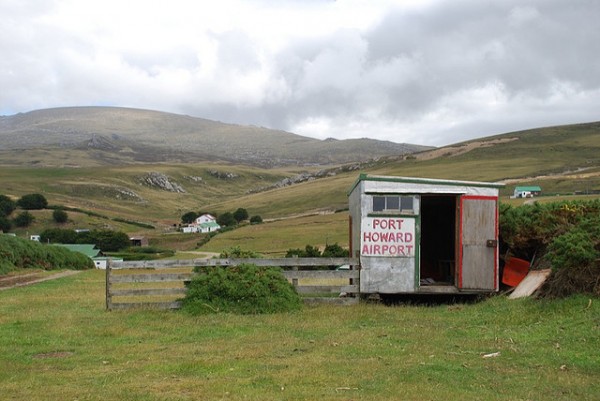
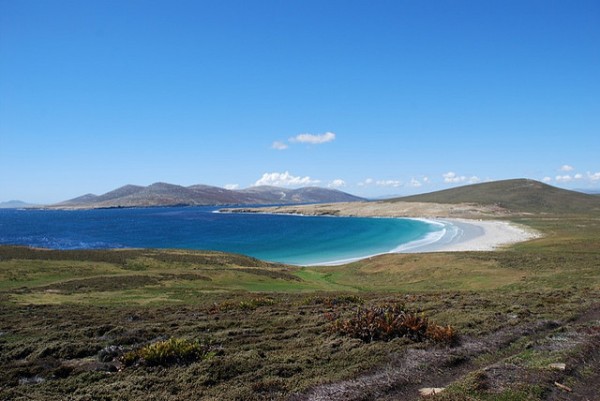
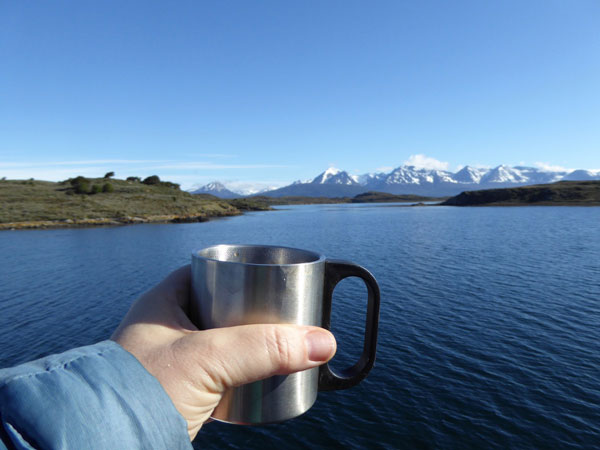
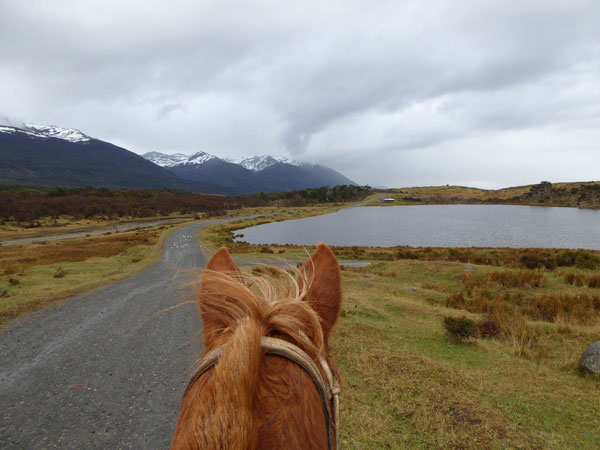


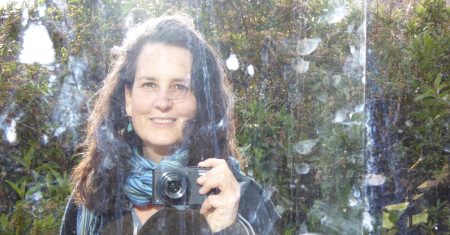
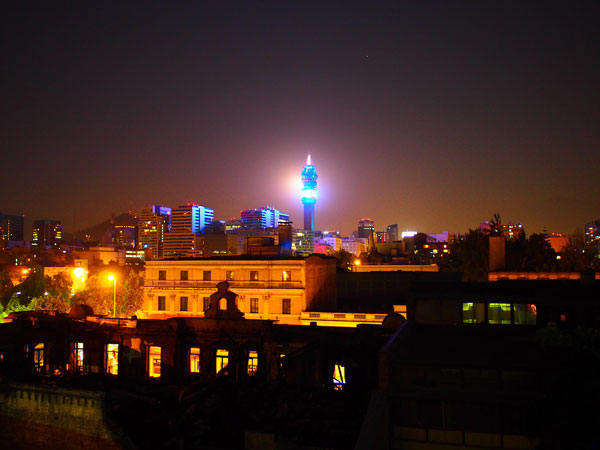
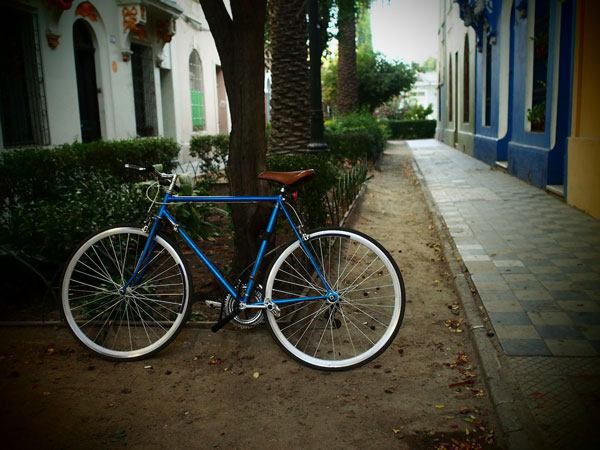


That is some beautiful water (and writing may I add). I wonder why the ocean is that color? It looks nearly akin to the color of the glacier-fed lakes so ubiquitous in parts of Patagonia, but I would not imagine that it is the same dynamic in the ocean. Did anyone ever explain to you why it is so in your short trip?
Thanks Gitte! I have no idea. Just the color of the ocean! Definitely not glacier-fed fresh water. I didn’t ask, or if I did, the explanation was nothing interesting. The ocean wasn’t like this everywhere near the Falklands, just this one piece from what I recall.
Lovely piece, Eileen. Pensive and nostalgic. Makes me think of the old Bob Seger song:
“Against the wind
I’m still runnin’ against the wind
I’m older now but still running
Against the wind….”
Congratulations on your award.
Thanks so much Sally! And now I know what song I’ll have running through my head for the next couple of hours. Not that I mind 🙂